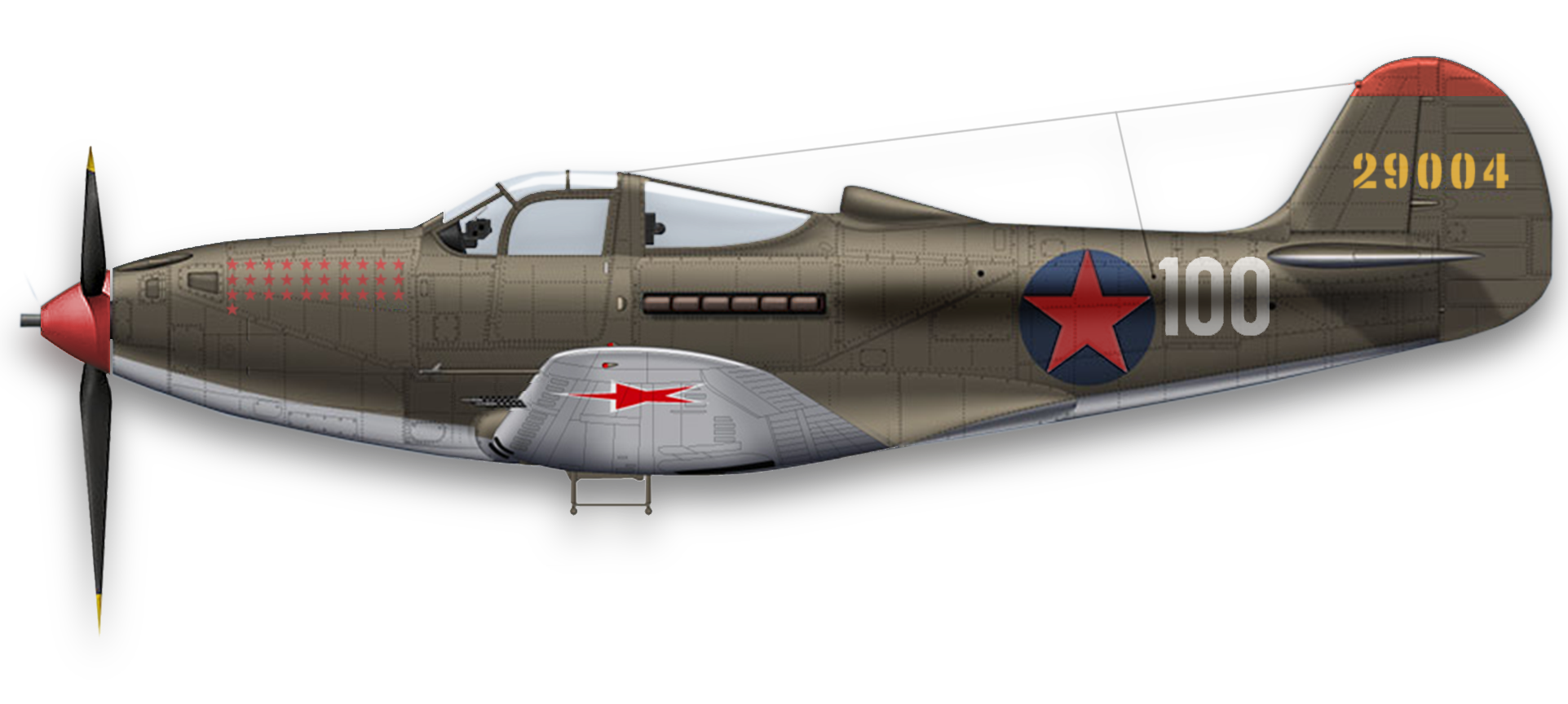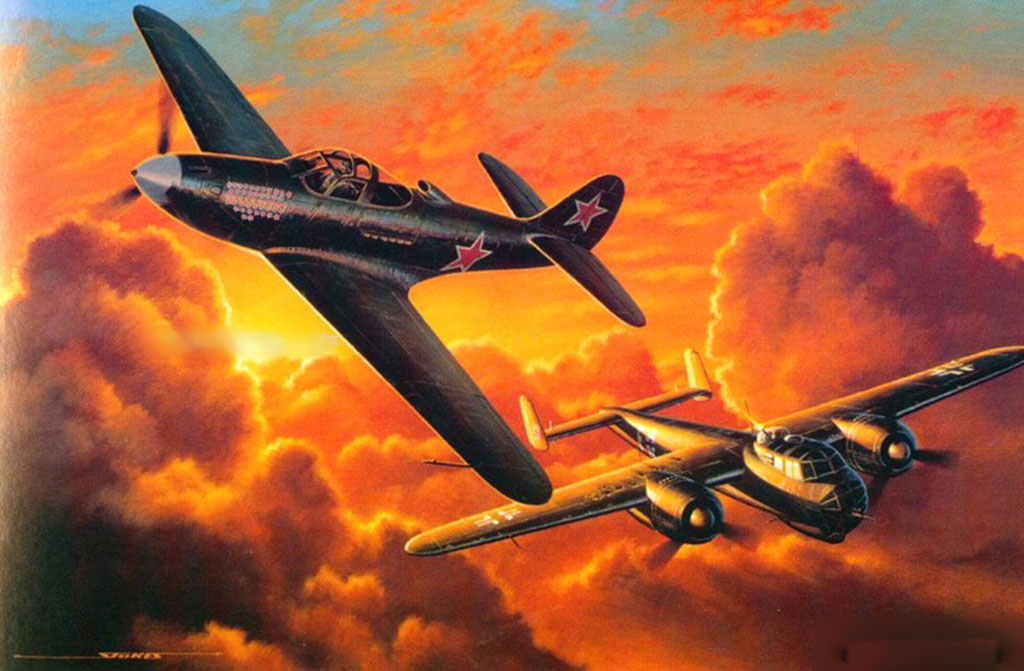
Кобрушка: Dear Cobra
With its superb streamlining, radical mid-engine layout, dorsal air intake, tricycle undercarriage, cockpit-side “car doors” (complete with roll-down windows) and a cannon firing through the propeller shaft, the prewar Bell P-39 Airacobra had the makings of a revolutionary frontline fighter. A decision by the U.S. Army Air Corps to delete the prototype’s turbo-supercharger from the production version relegated the P-39 to a sidebar in aviation history. When the Airacobra found its niche, however, it proved a formidable foe for the best German pilots, including Gerhard Barkhorn.
Before 1941 the USAAC, relying on wide oceans to secure America from bomber attack (and not planning to protect Britain from Germany), saw less need for high-altitude interceptors and escorts than for low-altitude ground attack planes. Down-powered for that role, the P-39 saw action over the Mediterranean and southwest Pacific (where the P-400 export model was known as “a P-39 with a Zero on its tail”). The fighter-starved British bought more than 200 P-400s, but after just one mission over France in October 1941 judged them unfit for high-altitude combat. They withdrew the lot and shipped most of them to Russia.
Like the prewar Americans, the Soviets had no need for high-altitude fighters. Instead of wide oceans, they had far-flung steppes and the Ural Mountains to shield their factories. Air combat over Russia was fought not as it had been over England, but as over Poland—down low, in support of ground troops. In dense air the P‑39 didn’t need a blower. The Airacobra’s mid-mounted engine gave it sports car balance and handling, and its pilot, seated high over the drivetrain, had a superb view. It came to gunfights packing more heat than the Messerschmitt Me-109F. Soviet pilots, for whom the P-39 was the Kobrushka (“Dear Cobra”), found it superior to the fighters with which their country started the war, and even to the Focke-Wulf Fw-190 at low altitude. Probably the Kobra’s greatest asset, though, was its radio, which allowed Soviet pilots to communicate effectively and coordinate their attacks.
Future Marshal of Aviation Alexander Pokryshkin (whose P-39N #42-9004 is shown here) and Major General of Aviation Grigoriy Rechkalov, the second- and third-ranking Soviet aces, both scored most of their victories in P-39s. After the war Pokryshkin was briefly blacklisted for preferring the Airacobra to Soviet fighters.
For a 1937 design, the P-39 had a long service life. (There aren’t many combat aircraft that ever reached the letter Q in subvariants.) It was involved in some of the last air-to-air actions of the European war. On May 8, 1945, a P-39Q flown by Red Army Air Force Lieutenant Sergei Stepanov had the bad luck to encounter a flight of Messerschmitt Me-262s on their way to surrender behind British lines, and was shot down by 1st Lt. Fritz Stehle. Conversely, Colonel Georgy Golubev claimed a Dornier Do-217 shot down near Prague on May 9 for his 16th victory. Golubev was also flying a P-39Q.

